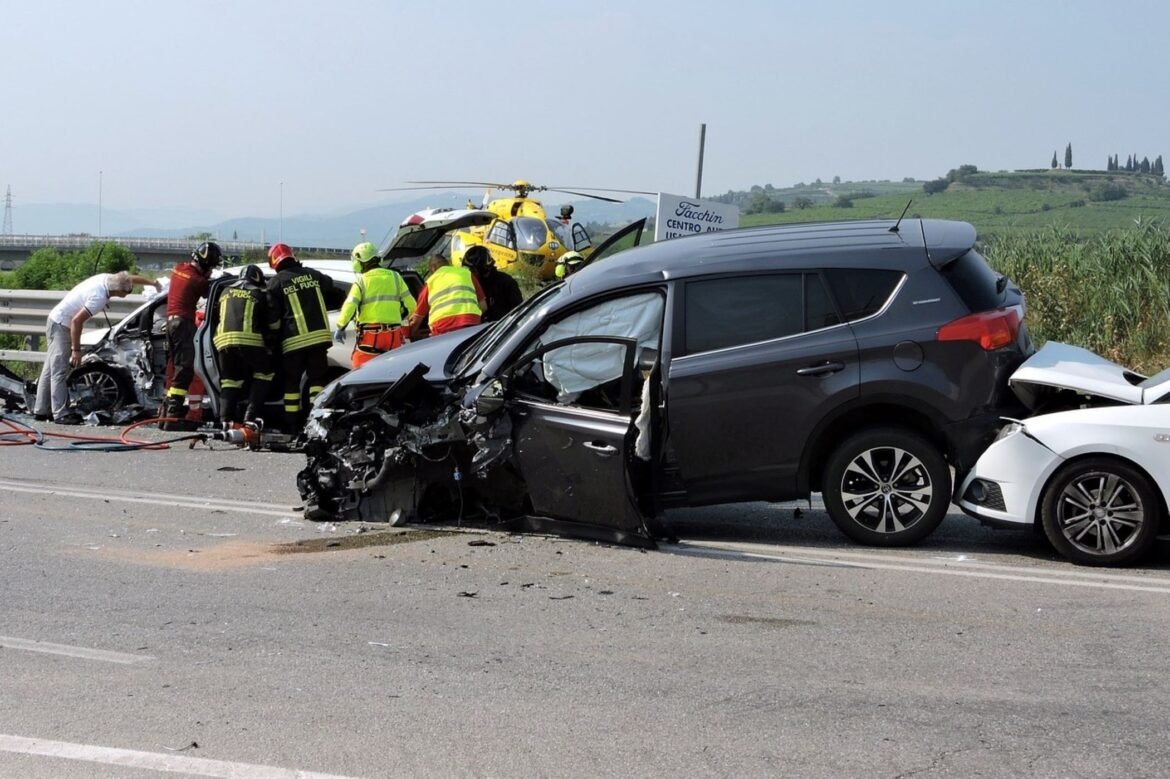It is no secret that fatal accidents occur too often on Nigerian roads.
All road users are at risk: vehicle drivers (cars, motorcycles, lorries, buses) and pedestrians alike.
When accidents occur, crowds gather to assist, watch and to record videos.
Generally, vehicles are parked indiscriminately, causing traffic and hazard for other road users.
Some drivers reverse even on highways to avoid the unexpected traffic chaos.
There are reasons why these accidents occur and why driving in Nigeria is a nightmare.
One is the poor adherence to traffic regulations.
Pedestrians cross the roads, including highways, haphazardly, refusing to use the few pedestrian bridges that exist.
Where the traffic lights work, road users disobey them, while drivers fail to adhere to speed limits.
The sidewalks have been turned to parking spaces or roads. Bus stops are ad hoc and the bus networks are a sham.
Many do not know the purpose of the zebra crossing.
Drivers who know, do not bother to stop for pedestrians.
Any pedestrian who expects drivers to stop at a zebra crossing does so at the risk of losing their life.
The second reason is that many vehicles are in bad condition. All sorts of vehicles are imported into Nigeria. Some could be passed off as junk.
These dangerous vehicles breakdown and cause traffic jams. With no caution signs, their drivers place some leaves and tree branches as a warning to other road users.
Many drivers do not bother to push their vehicles to the roadside after a breakdown. They just leave it wherever it breaks down and face no consequences for doing so.
Unfortunately, these vehicles with broken or no lights, no seat belts and bad tyres etc. are the only form of transportation available to the majority of Nigerians. Whether they are cars, motorcycles, tricycles or buses.
The failure of government to provide decent and efficient transportation network leaves citizens with no choice but to use these rickety and dangerous vehicles.
Imagine the plight of the elderly, disabled, parents with babies and young children etc. That is another conversation of its own.
How is it that the Directorate of Road Traffic Service or Vehicle Inspection Offices exists and yet there are so many bad vehicles on our roads? How were the owners of these vehicles issued road worthiness certificates? Are there enough vehicle inspection centers in all states?
Thirdly, the roads are in a bad state. Untarred, pot holes, poorly constructed, and poorly maintained.
All pointing to our poor maintenance culture. Like so many other things, we wait till so much damage has been done, before trying to solve the problem.
The fourth reason is the lack of sufficient instruction, information and warning signs.
Without route planners like Google maps, it would be almost impossible to know when you have approached, a particular street, ramp or exit.
Many times, you do not know that there is an exit or ramp ahead till you reach it.
A licensed driver should be able to drive in a city even if he/she has not lived there before.
Why is it almost impossible for a person to visit another city in Nigeria in 2022 for the first time and be unable to drive?
Driving in Nigeria should not be limited to memorizing the road network or guesswork.
There seem to be more billboards/adverts than information signs for road users.
Even if you are fortunate to see an information sign, it is not likely to provide details of the distance ahead to arrive there. Information signs can even be placed repeatedly along the way.
It is now common to see drivers reversing on highways after missing a turn or exit.
Not caring for traffic regulations or the accident that could happen as a consequence.
People would not need to ask for directions so often or hold up other vehicles if these signs existed.
Often, it takes ages for diversion signs to be placed during road works.
On completion of the works or construction, it could take years for information signs to be placed.
Even in the Federal Capital Territory.
Lastly, so many roads are not marked.
Though, most road users would not know the meanings of the markings at this stage.
Even the expressways are not divided into lanes. Those that were marked previously have faded.
So, drivers disregard the lanes even on parts of the expressways that are marked. Leading to more confusion.
Many questions require honest answers in order to save lives on our roads.
• Do we have an adequate number of driving schools to cater for our large population?
• What is the condition of the vehicles used for instruction?
• How many people are tested or examined before obtaining a driver’s license?
• Have many drivers had their eyes tested?
• How do those who are illiterate in English pass their drivers test; theory and practical?
• Is the highway code widely available and accessible?
• Should the highway code be translated to other Nigerian languages, considering the deteriorating standard of education, since many are not literate in English.
• Are there serious long-term plans for continuous orientation campaign to change behaviour on our roads.
We must find solutions to this problem.
Sighing and hoping for a miracle will take us nowhere. The consequences of inaction in this case, is more fatalities.
Efe Remawa is a lawyer. She works in the development sector.








